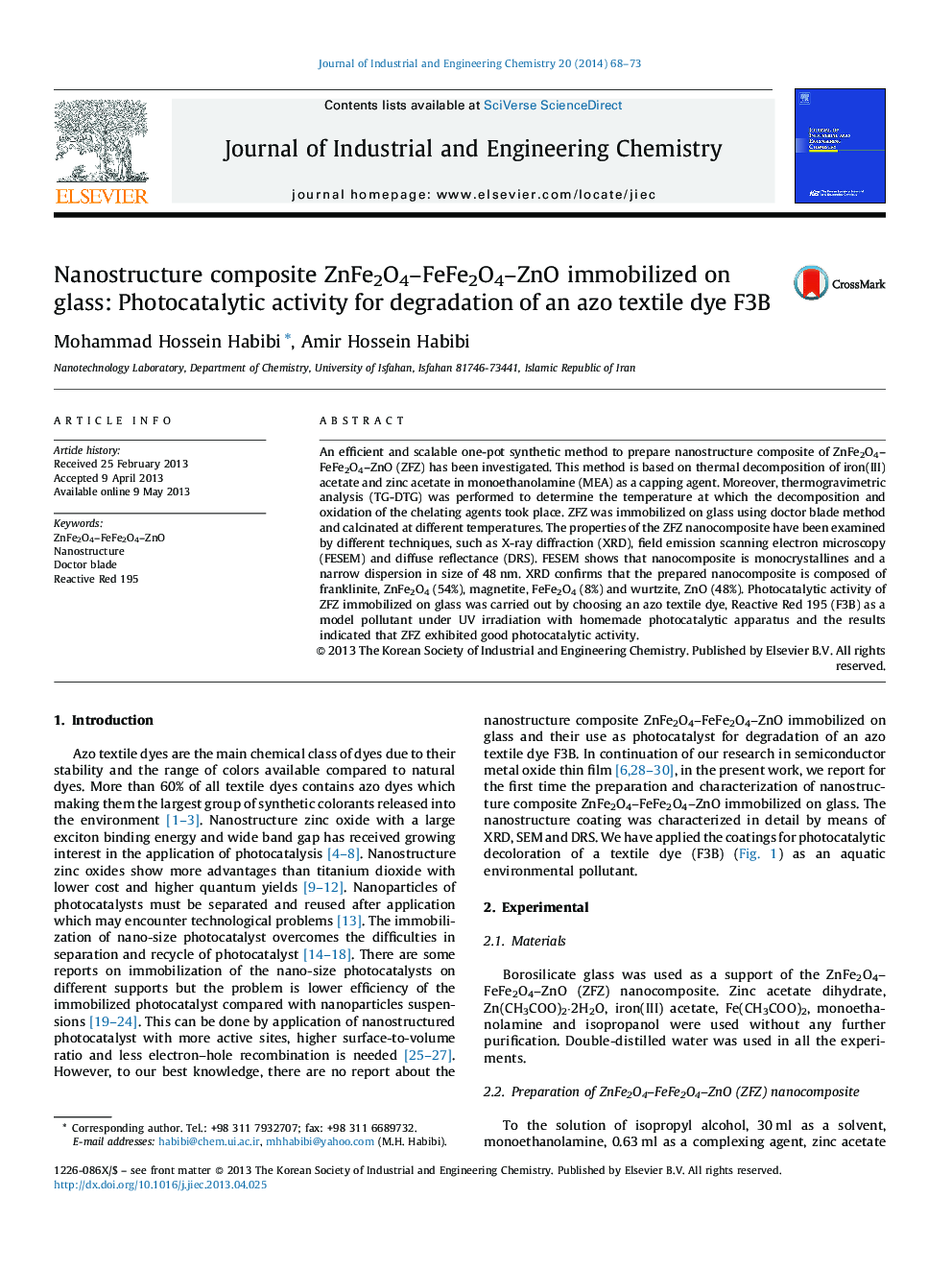| Article ID | Journal | Published Year | Pages | File Type |
|---|---|---|---|---|
| 227825 | Journal of Industrial and Engineering Chemistry | 2014 | 6 Pages |
An efficient and scalable one-pot synthetic method to prepare nanostructure composite of ZnFe2O4–FeFe2O4–ZnO (ZFZ) has been investigated. This method is based on thermal decomposition of iron(III) acetate and zinc acetate in monoethanolamine (MEA) as a capping agent. Moreover, thermogravimetric analysis (TG-DTG) was performed to determine the temperature at which the decomposition and oxidation of the chelating agents took place. ZFZ was immobilized on glass using doctor blade method and calcinated at different temperatures. The properties of the ZFZ nanocomposite have been examined by different techniques, such as X-ray diffraction (XRD), field emission scanning electron microscopy (FESEM) and diffuse reflectance (DRS). FESEM shows that nanocomposite is monocrystallines and a narrow dispersion in size of 48 nm. XRD confirms that the prepared nanocomposite is composed of franklinite, ZnFe2O4 (54%), magnetite, FeFe2O4 (8%) and wurtzite, ZnO (48%). Photocatalytic activity of ZFZ immobilized on glass was carried out by choosing an azo textile dye, Reactive Red 195 (F3B) as a model pollutant under UV irradiation with homemade photocatalytic apparatus and the results indicated that ZFZ exhibited good photocatalytic activity.
